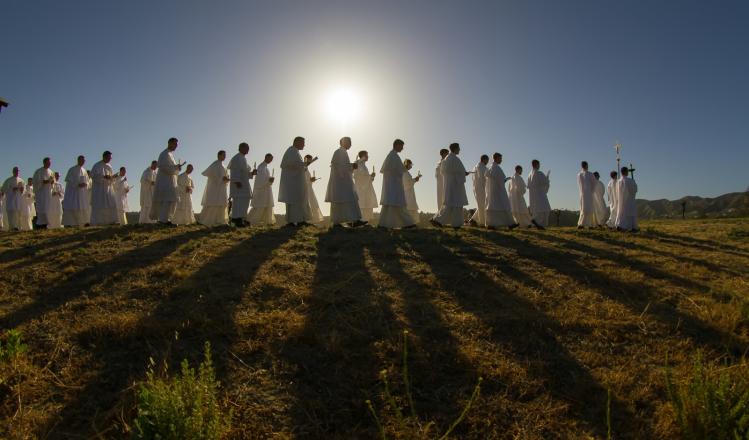
Interested in discussing this collection in your classroom, parish, reading group, or Commonweal Local Community? Click here for a free discussion guide.
In April 2020, just as Covid began sweeping across the United States, Commonweal published a special feature about parish life in this country, examining how recent changes visible in the pews reflected broader dynamics in the Church and society at large. More than a year and a half later, with the lasting effects of the pandemic beginning to come into focus, we are now publishing a set of articles devoted to Catholic religious communities, in the broadest sense of that term.
The subtitle of this feature alludes to William James’s famous book The Varieties of Religious Experience (1902), which argues that the essence of religion is individual experience, not doctrines or institutions. Our subtitle, “The varieties of religious community today,” is both a tribute to James’s great work and a partial challenge to its thesis, for in Catholic Christianity individual religious practice is usually mediated by some kind of community, and even the most solitary mystical experiences are intelligible in reference to the whole Body of Christ. Just as we understand the Trinity as a set of relationships within the Godhead, we understand the practice of Christian faith to entail a set of relationships—first between each of us and God, but also between the members of families, parishes, and the universal Church.
In addition to these ordinary levels of community, the Church has, from its earliest centuries, also found room for special intentional communities: religious orders, secular institutes, confraternities and sodalities, lay ecclesial movements, pious houses and houses of hospitality. Most of these categories are represented in the following pages. Regina Munch reports from Bethlehem Farm in rural West Virginia, which describes itself as a “contrast community.” Griffin Oleynick writes about the achievements and challenges of a Norbertine abbey in Albuquerque, New Mexico. Paul Elie talks with two members of the New York chapter of the Community of Sant’Egidio, which offers meals to homeless people in Grand Central Station and teaches English to recent immigrants. Kaya Oakes describes the spiritual practices of Camaldolese monks and oblates in Berkeley, California. And Louise Zwick, the co-founder of Casa Juan Diego, a Catholic Worker house of hospitality in Houston, Texas, relates how the events of the past year have affected her community’s outreach to the poor and refugees. In between, there are shorter testimonials by members of a Marianist lay community, the Dominican Sisters of Peace, and the Knights of Peter Claver.
Despite the impressive variety of these communities, some common themes emerge: the importance of a shared prayer life; the difficulty of adapting to new circumstances; the relationship of community to place. Perhaps the most prominent theme is a sense of hope in the face of precariousness and uncertainty. All of these communities—both the new and the very old—know that they could disappear within a generation or two (religious vows of stability aren’t incompatible with a keen appreciation of fragility). The pandemic has underscored just how quickly and unexpectedly things can change, and it has forced many of these communities to make some hard decisions. But it has also underscored the value of the work they do, and the importance of their example to the rest of the Church. In the early months of the pandemic, it was common to hear that “we’re all in this together.” This was, alas, rarely more than an aspiration. In each of the communities profiled here, we see how it might become a reality.
Related:
- A spirit of abundance at Bethlehem Farm
- Embracing uncertainty with the Norbertines of Santa Maria de la Vid
- The genius of monastic life and oblate formation at a tiny Camaldolese community
- Welcoming the poor and stranger at Casa Juan Diego
- Adapting to new places and pandemic times with the Community of Sant’Egidio
- Finding a place in Catholicism through the lay Marianists
- Total transformation with the Dominican Sisters of Peace
- Resilience in the face of hatred with the Knights of Peter Claver
Please email comments to [email protected] and join the conversation on our Facebook page.
Share
Previous Story
Letters | Comings and Goings
Next Story
They Were Here